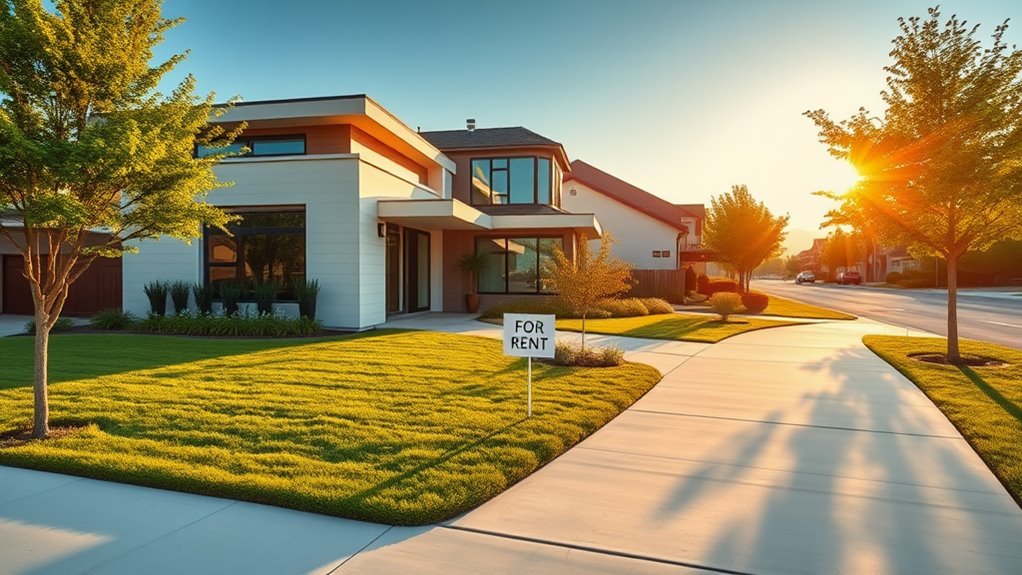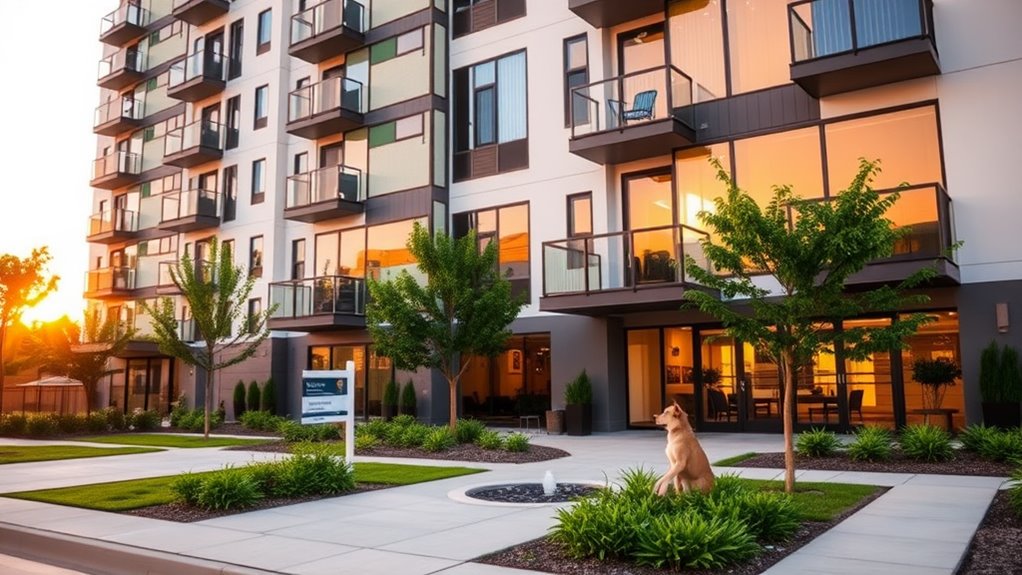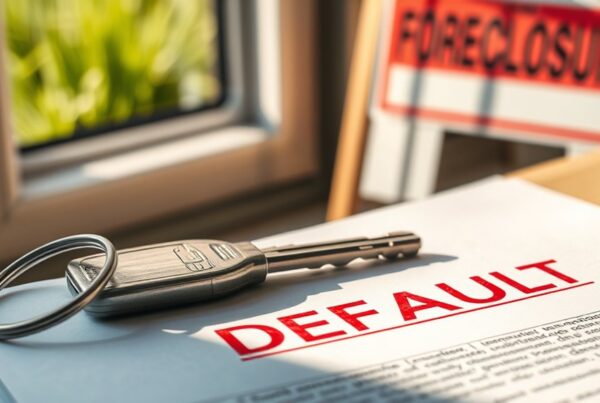A strong ROI on rental property typically ranges between 8% to 12%, calculated by dividing net income by the total property cost. This percentage reflects the effectiveness of your capital in generating profit. Factors like rental income, operating expenses, and NOI play critical roles. Leveraging through financing can amplify returns, though it introduces additional costs. By understanding these metrics, you can make informed decisions that optimize your investment’s potential for higher returns.
Key Takeaways
- A strong ROI on rental property typically ranges between 8% to 12%.
- ROI measures profitability by dividing net income by total property cost.
- Leveraging through financing can amplify ROI percentages significantly.
- Location, market trends, and economic growth heavily influence rental property ROI.
- Cash-on-cash return and cap rate are key metrics to assess rental property ROI.
Understanding ROI in Rental Property Investments
When investing in rental properties, understanding ROI is crucial because it directly measures how effectively your capital is generating profit. In real estate investments, ROI is the percentage return you earn on your investment, calculated by dividing your net income by the total cost of the property. A strong ROI, typically ranging between 8% to 12%, indicates efficient use of capital and competitive returns. However, achieving this depends on factors like rental income, operating expenses, and net operating income (NOI). NOI, which excludes financing costs, directly impacts your net income and, consequently, your return on investment. High ROI often signals profitability but may also reflect higher risk in certain markets. By analyzing ROI, you can compare rental property investments, assess their financial viability, and make informed decisions to maximize returns in the competitive real estate sector. Additionally, the Price-to-Rent Ratio can help gauge whether a property offers sound investment potential by comparing its value to annual rental income.
Key Components of Rental Property ROI Calculation

Calculating ROI on rental property requires breaking down its core components to accurately assess profitability. You’ll need to analyze key metrics like gross rental income, operating expenses, and net operating income (NOI) to determine your return on investment (ROI). Start by identifying your gross rental income, then subtract operating expenses and vacancy rates to calculate NOI. Multiply NOI x 12 months to determine year-end profitability. Finally, divide this by your total cash investment to derive your ROI percentage. Here are the essential components you’ll need:
- Gross Rental Income: Total income from rent before expenses.
- Net Operating Income (NOI): Income minus operating expenses and vacancy.
- Total Cash Investment: Property purchase price plus any upfront costs.
- Annual Cash Flow: Monthly cash flow multiplied by 12 months. Utilizing a Long Term Rental Calculator can enhance accuracy by providing detailed financial projections and cash flow analysis.
Factors Influencing a Good ROI on Rental Properties

Understanding market trends helps you predict rental demand and adjust strategies for higher returns. Location plays a critical role since properties in thriving areas command higher rents and experience lower vacancies. Analyzing these factors guarantees you invest in assets with the strongest ROI potential. Always evaluate rent-to-price ratios to ensure your property generates sufficient cash flow.
Market Trends Analysis
To maximize your ROI on rental properties, it’s essential to evaluate how market trends influence demand and value in different areas. Urban areas often see high demand and rising rental prices, but suburban regions are gaining traction due to remote work trends. Economic growth in a specific area, like job creation, can amplify tenant demand, while neighborhoods with infrastructure development may offer significant appreciation potential. Additionally, regions with lower property taxes and favorable landlord-tenant laws can boost your net rental income. Understanding local market dynamics through comprehensive analysis can further strengthen your investment strategies and identify emerging opportunities. Here are four key trends to monitor:
- Remote work trends expanding demand beyond urban centers.
- Economic growth driving tenant demand in emerging markets.
- Infrastructure development increasing property values in revitalized areas.
- Legal
Property Location Impact
Property location plays a pivotal role in determining the ROI of rental properties, as it directly influences both rental income and long-term value appreciation. Proximity to amenities like schools, public transport, and shopping centers attracts long-term tenants, reducing vacancy periods and boosting rental rates. Emerging neighborhoods with planned infrastructure developments offer opportunities for above-average ROI due to rising property values and tenant demand. While urban areas often yield higher rental income, suburban or rural properties can offer better ROI percentages due to lower purchase prices. Local economic conditions, such as job growth and industry expansion, further impact rental property ROI by driving tenant demand and rent prices.
| Factor | Urban Areas | Suburban/Rural Areas |
|---|---|---|
| Purchase Prices | Higher | Lower |
| Rental Rates | Higher | Moderate/Lower |
| Vacancy Periods | Lower | Longer |
| Infrastructure Developments | Established | Emerging |
Comparing Cash Purchase vs. Financed Property ROI

Cash purchase ROI typically offers simplicity and lower upfront costs, such as an 8.3% return on a $100,000 investment with no mortgage expenses. Financed property ROI leverages a smaller down payment, potentially amplifying returns but includes higher upfront costs and mortgage-related expenses, like a 16.2% return on a $41,250 investment. Comparing these scenarios highlights the trade-offs between immediate cash flow and leveraging opportunities. Properly monitoring cash flow ensures the property remains a profitable asset and prevents financial strain.
Cash Purchase ROI
When analyzing rental property investments, cash purchases yield a straightforward ROI calculation by dividing annual returns by the total purchase price, eliminating mortgage-related complexities. This approach guarantees a clear assessment of your real estate investment’s performance. Here’s what you need to know about cash purchase ROI:
- Formula: ROI = Annual Returns ÷ Total Investment.
- Example: A $9,000 annual return on a $120,000 property yields a 7.5% ROI.
- Consistency: Excluding mortgage payments guarantees predictable return percentages.
- Capital Outlay: Higher upfront investment reduces leverage but simplifies expenses.
- Income Sources: Incorporate ancillary income like pet fees or parking charges to boost overall returns.
Financed Property ROI
Understanding ROI calculations for rental property investments expands when financing enters the equation. Financed property ROI differs substantially from cash purchase ROI because it incorporates mortgage payments, down payment, and closing costs. For example, a $41,250 down payment with a $6,680 annual return yields a 16.2% ROI, surpassing the 8.3% return on a cash purchase. Leveraging allows you to amplify your ROI by using borrowed capital, but it introduces higher upfront costs like the down payment and closing expenses. Mortgage payments directly impact your cash flow and annual return, making them a critical factor in the ROI calculation. While financed rental property investments can deliver higher returns, they also carry additional financial risks, requiring careful analysis of the costs and benefits of leveraging. When evaluating financed properties, understanding the Debt Service Coverage Ratio can provide insights into the property’s ability to generate sufficient income to cover loan obligations.
ROI Comparison Analysis
Comparing the ROI of cash purchases to financed properties highlights the impact of leveraging on investment returns. With a cash buy, you’ll see a steady annual return, but your initial investment is substantial. A financed purchase, however, reduces your upfront cash outlay, allowing you to amplify your ROI through a smaller down payment. Here’s a breakdown:
- Cash Purchase ROI: Based on the full property price, it’s straightforward but often lower (e.g., 8.3% on $165,000).
- Financed Purchase ROI: Focuses on the down payment, yielding higher percentages (e.g., 16.2% on $41,250).
- Cash Flow Impact: Mortgage payments and property management fees reduce cash flow but don’t negate ROI gains.
- Interest Rates: Influence financed ROI to a great extent, making terms critical to profitability.
Leveraging maximizes ROI potential, but it’s crucial to weigh interest rates and monthly obligations carefully.
Additional Metrics for Evaluating Rental Property Returns

Evaluating rental property returns involves more than just basic calculations; additional metrics provide deeper insights into profitability and long-term potential. The Gross Rent Multiplier (GRM) helps assess affordability by dividing the property’s purchase price by its annual gross rental income—a lower GRM suggests a more lucrative investment. Cash-on-Cash Return focuses on pre-tax cash flow relative to the total cash invested, offering a clear picture of your actual yield. Net Operating Income (NOI) subtracts operating expenses from rental income, excluding mortgage payments, to evaluate the property’s financial health. Cap Rate, derived by dividing NOI by the property’s current market value, allows you to compare potential returns across different investments. Annual Cash Flow, the difference between rental income and expenses, indicates the property’s ability to generate consistent monthly profit. These metrics collectively refine your understanding of a property’s viability.
Strategies to Maximize ROI on Rental Property Investments

To maximize ROI on rental property investments, you’ll need to adopt strategic approaches that balance income optimization with cost efficiency. By focusing on key areas, you can enhance your cash flow and reduce operating costs. Here are four actionable strategies to improve your returns:
- Reduce Vacancy Rates: Conduct thorough tenant screenings and offer competitive lease terms to minimize tenant turnover. This guarantees consistent rental income and lowers marketing expenses.
- Proactive Property Maintenance: Address minor repairs promptly to avoid costly fixes later. Well-maintained properties attract long-term tenants and reduce unexpected expenses.
- Optimize Management Practices: Partner with a professional property management company to streamline operations, improve tenant satisfaction, and set competitive rental prices.
- Apply the 1% and 2% Rules: Verify monthly rent covers at least 1% of the property’s purchase price, or aim for 2% for higher returns, depending on your real estate investing goals.
These strategies will help you sustain profitability and maximize your rental income.
Conclusion
You’ve seen the numbers—ROI on rental property hinges on location, expenses, and financing. A 6-10% ROI is solid, but don’t settle. Crush mediocrity by optimizing costs, selecting high-demand areas, and leveraging financing wisely. Remember, your journey isn’t just about percentages; it’s about transforming bricks into a legacy. Let the data guide you, but let your ambition fuel the fire. After all, every great empire started with a single investment.




